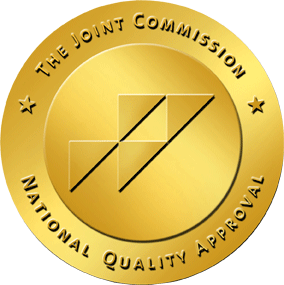Addiction is a complex condition that affects millions of people worldwide, regardless of gender, age or background. However, men and women often experience addiction in different ways, both biologically and socially. Their substance use patterns, risk factors, and recovery trajectories can vary considerably due to hormones, societal expectations, mental health challenges and more. Understanding these gender-based differences can help clinicians and loved ones provide more tailored support and treatment strategies, ultimately improving the likelihood of long-term recovery.
Below, we will explore how substance use disorders (SUDs) can manifest differently for men and women, focusing on specific substance categories such as depressants, opioids, alcohol, marijuana and stimulants. By appreciating the distinct experiences of men and women with addiction, we can foster more empathetic treatment approaches that acknowledge and address each group’s unique challenges.
How Do Men and Women Differ When It Comes to Addiction?
Biological and social factors both play crucial roles in shaping men’s and women’s experiences with substance use. While every individual is different, there are trends that researchers and treatment professionals have observed repeatedly in clinical settings:
- Biological Differences: Men and women have different hormone levels, body fat composition, and metabolic rates, which can influence how substances are absorbed, distributed, and eliminated from the body. For example, women often have lower body weights and higher body fat percentages than men, making them more susceptible to certain substances’ effects and raising the risk of toxicity and overdose.
- Psychosocial Influences: Cultural and societal expectations can drive substance use patterns and perceived stigma. In some cultures or social groups, men may be expected to drink heavily or experiment with drugs, while women may experience greater criticism or shame for the same behaviors. This stigma can delay or discourage women from seeking help and may also shape the substances they choose.
- Co-Occurring Mental Health Issues: Both men and women with addiction commonly have co-occurring mental health disorders (e.g., depression, anxiety, trauma-related disorders). However, the types of mental health challenges and how they intersect with substance use can differ by gender. Women may be more prone to mood disorders and post-traumatic stress disorder, while men may struggle with externalizing disorders, such as aggression or antisocial behavior, all of which can influence the trajectory of addiction.
- Relapse and Recovery: Men and women can also differ in their recovery journeys. Various gender-specific factors — from parental responsibilities to hormonal shifts — can impact how individuals respond to treatments, their relapse triggers, and the support systems available to them.
Below, we delve deeper into these differences by looking at men’s and women’s addiction patterns separately and then examining how these discrepancies play out across specific classes of substances.
Recovery Can Be Life Changing
Whether you or a loved one is struggling with addiction, our expert team is here to guide you every step of the way. Don’t wait— reach out today to take the first step toward taking control of your life.
“My life has became something that I’m proud of and something I can be grateful for.“
– Joseph McDermott, The Recovery Village Cherry Hill Alumni
Addiction in Men
Addiction in men often presents in ways that reflect social and cultural norms around masculinity and risk-taking. Studies suggest that men are more likely to:
- Experiment Early and Use Heavily: Men, particularly in their adolescence and early adulthood, may be socially encouraged to drink alcohol or try drugs in group settings. Peer pressure, combined with lower perceived stigma and fewer immediate social consequences, can lead to earlier onset of substance use.
- Show Externalizing Behaviors: Men with substance use disorders may exhibit aggression, defiance or antisocial tendencies. In some cases, drug use can be tied to thrill-seeking behavior and attempts to deal with stress, anger or societal pressures around “being tough.”
- Face Different Social Consequences: Society tends to view certain types of substance use — like binge drinking — as more “acceptable” for men than women. Men might face fewer initial social repercussions for their heavy substance use, potentially delaying awareness of a problem or the desire to seek help.
- Experience Health Risks Over Time: While men’s bodies might metabolize some substances more quickly (especially if they have greater muscle mass compared to women), chronic heavy use can still lead to serious health concerns. Liver damage, cardiovascular problems, and other organ complications can develop when men engage in prolonged high-level use.
- Face Barriers to Emotional Support: Men can encounter stigma that discourages them from expressing vulnerability. This expectation may delay them from seeking therapy or support groups, impacting their ability to fully engage in recovery treatment that addresses emotional and mental health components.
Addiction in Women
Although any generalization about gender and addiction should be taken with caution, certain patterns appear repeatedly in clinical research related to women. Women with addiction often:
- Progress Rapidly in Substance Use (“Telescoping”): Once women begin using drugs or alcohol, they may develop dependence more quickly than men, even if they use lower amounts. This phenomenon, sometimes called telescoping, is partly due to biological factors such as hormonal differences and body composition.
- Use Substances to Self-Medicate: Women commonly struggle with mood disorders like depression and anxiety, and they may use substances to cope with emotional pain or trauma. Past experiences of abuse, intimate partner violence or other forms of trauma can serve as powerful motivators for substance use to numb psychological distress.
- Face Greater Stigma and Isolation: Societal expectations often hold that women, especially mothers, should prioritize family and caregiving. This perception can make women feel intense guilt or shame about their substance use, preventing them from reaching out for help. They may also fear losing custody of their children or damaging social relationships, creating additional barriers to seeking treatment.
- Encounter Unique Health Risks: Substance use can disrupt women’s menstrual cycles, hormonal balance and overall reproductive health. When pregnant or breastfeeding, women also face additional dangers, as substance use can harm fetal development or infant health.
- Respond to Gender-Specific Treatment Approaches: Women-only treatment programs or counseling groups can help women feel safer discussing experiences of trauma, parenting challenges and societal pressures. Such spaces often facilitate more open conversations and foster a supportive community.
By recognizing how addiction manifests differently in men and women, clinicians, therapists and loved ones can cater treatment strategies to help each individual thrive in recovery. Next, we explore how these differences unfold within specific substance categories.
Depressants
Depressants include substances like benzodiazepines (e.g., Xanax, Valium) and barbiturates. These medications primarily slow down the central nervous system, leading to sedation and reduced anxiety. They are often prescribed for anxiety, insomnia or panic disorders.
- Women: Women tend to be prescribed depressant medications at higher rates than men, often related to anxiety, insomnia or other mental health conditions. This ease of access can increase the risk of misuse or dependence. Hormonal factors can also intensify the effects of these depressants, making women more vulnerable to rapid dependency. When combined with other substances (such as alcohol), women are at an even higher risk of overdose and severe health complications.
- Men: Men might be less likely to be prescribed depressants for sleep or anxiety compared to women due to differences in how men display symptoms of stress. However, men who do obtain these prescriptions may feel they need more frequent or higher doses to cope with extreme stress or insomnia. Additionally, men may combine these depressants with alcohol or other substances to enhance the sedative effects, increasing the risk of overdose.
Opioids
Opioids include both prescription painkillers (e.g., oxycodone, hydrocodone) and illicit drugs like heroin. They work by binding to opioid receptors in the brain, reducing the perception of pain and often causing euphoria.
- Women: Women often report experiencing pain more frequently and intensely than men, which can increase the likelihood of receiving opioid prescriptions. Once prescribed, women may become dependent more quickly due to biological sensitivity. Pregnant women who struggle with opioid addiction face immense risks, including potential complications such as neonatal abstinence syndrome in infants. Stigma around maternal substance use can also hinder women from disclosing their struggles or seeking proper prenatal care.
- Men: Historically, men have had higher rates of opioid use than women, though this gap has narrowed over the past few decades. Men might begin opioid use due to sports injuries, work-related accidents, or chronic pain conditions. Social factors such as pressure to be physically strong or “push through” pain can lead to ongoing, high-dose opioid consumption without seeking help.
Alcohol
Alcohol remains one of the most commonly used and misused substances worldwide. Patterns of drinking and addiction risk can differ by gender:
- Women: Women usually drink less alcohol than men overall, but they are more susceptible to its adverse effects. Because of lower average body weight and higher body fat composition, women experience higher blood alcohol concentration (BAC) levels from the same amount of alcohol. They also have a higher risk of developing health complications, including liver disease, heart damage and breast cancer. Furthermore, heavy drinking in women can heighten the likelihood of sexual assault and other forms of violence, adding further complexity to their journey toward recovery.
- Men: Men traditionally have higher rates of alcohol use disorder. Social norms often encourage men to drink in large groups, at sporting events or social gatherings, normalizing heavy drinking behavior. Men may feel less societal judgment for binge drinking, and some workplaces or peer groups reinforce alcohol use for bonding. Over time, heavy alcohol use can lead to liver disease, cardiovascular issues, and psychological problems such as aggression or depression.
Marijuana
Marijuana (cannabis) is often perceived as less harmful than other substances, but it still carries addiction potential and can lead to mental and physical health repercussions.
- Women: Women’s marijuana use can be closely linked to mood regulation, stress and anxiety relief. Some women may find it helpful for menstrual pain or other physical discomforts, which can transition into habitual use. They may also be more sensitive to certain psychoactive effects due to hormonal differences. Women’s roles as caregivers and the potential legal consequences (child custody issues, for instance) can influence whether or how openly they seek help if marijuana use becomes problematic.
- Men: Men tend to use marijuana more frequently and in larger amounts than women. They may also be more likely to consume it in social settings where peer groups reinforce or normalize use. For men, marijuana can serve as a coping mechanism for stress or boredom. However, chronic heavy use can interfere with testosterone levels, sperm count and overall motivation.
Stimulants
Stimulants include prescription medications for ADHD (e.g., Adderall, Ritalin), illicit drugs like cocaine or methamphetamine, and widely used legal stimulants such as caffeine or nicotine. They work by increasing levels of dopamine and norepinephrine in the brain, leading to heightened alertness, energy, and euphoria.
- Women: Women may turn to stimulants for various reasons, such as weight control, increased energy to manage household and work responsibilities, or self-medication for depression or anxiety. Female stimulant users can experience rapid escalation in use and may develop dependence quickly. Stimulant use during pregnancy can result in complications such as low birth weight and developmental challenges for the child. Additionally, co-occurring eating disorders (e.g., bulimia) can intersect with stimulant misuse, making treatment more complex.
- Men: Men often begin using stimulants like cocaine or methamphetamine in pursuit of a euphoric high, improved athletic or work performance, or enhanced sexual drive. They may be prone to risk-taking behavior and polydrug use (mixing multiple substances) to achieve specific effects. Chronic stimulant use can lead to cardiovascular problems, aggression, and mental health conditions such as paranoia or psychosis.
Substance Abuse Addiction Treatment in New Jersey
If you or a loved one is struggling with a substance use disorder, the time to act is now. Getting professional addiction treatment to start your path to recovery is the best thing you can do for your holistic and physical health.
When you’re ready to feel better, live healthier and overcome your substance use disorder, reach out to the team at The Recovery Village Cherry Hill at Cooper, in New Jersey. From the moment you call, our team will help you work toward a thriving life in recovery. Contact us today.









